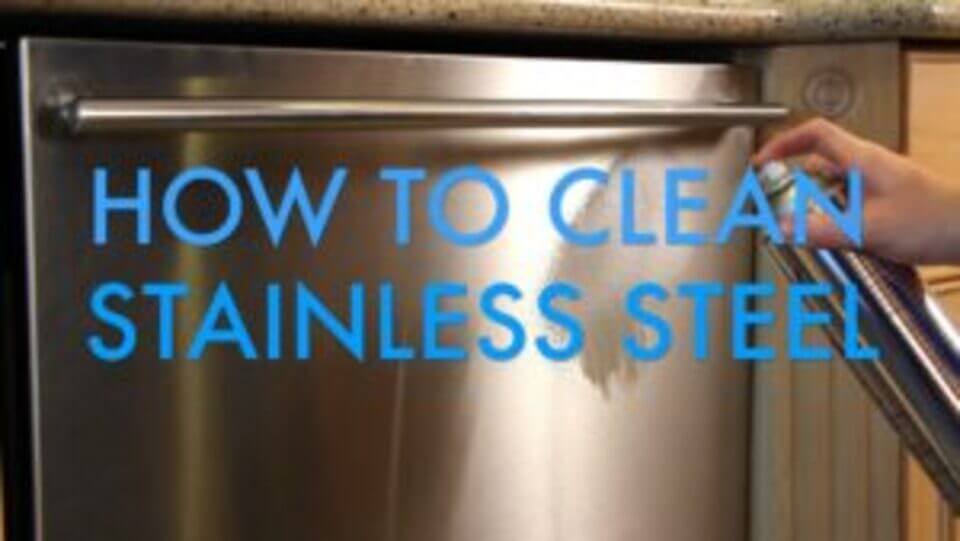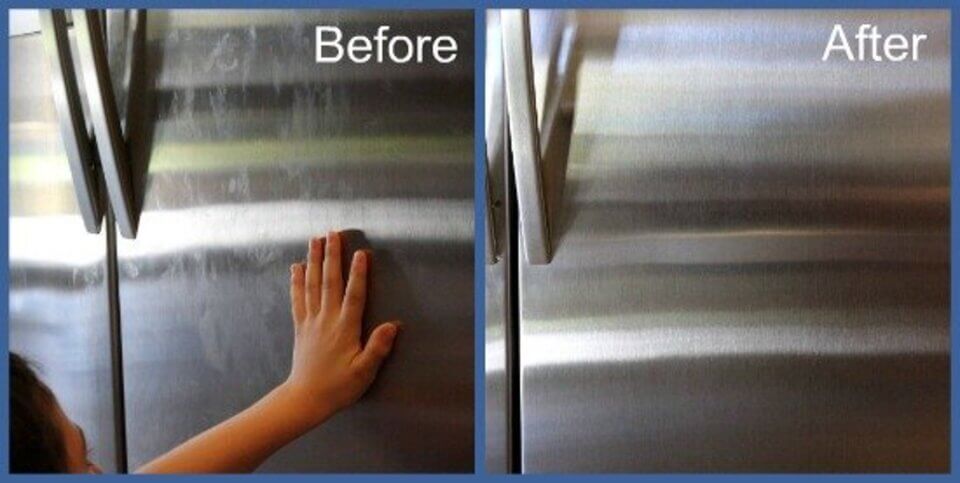Eco-Friendly Stainless Steel Cleaner Solution

We have a love-hate relationship with stainless steel.
It’s such a sleek style. The sophistication is unmatched. But on the other hand, it can be a pain to clean.
In our team’s long-time experience cleaning houses using only nontoxic green products, we’ve learned a trick or two to make things sparkle and shine.
Most of these solutions are labor intensive because we refuse to use aerosolized petrochemicals or anything else that could be classified as a neurotoxin. Unfortunately, the best cleaners for stainless steel that we’ve seen on the market contain propellants and other unrecognizable ingredients.
Our mission at Clean Affinity: We don’t use anything we cannot pronounce when cleaning people’s homes where they need to live and eat safely!
So that leaves a problem: what do we do about cleaning stainless steel?
Stainless Steel Cleaning Tips and Tricks

Know Your Surface Type
Some stainless steel finishes, and even some made to look like stainless steel, clean up perfectly every time.
However, some finishes are just difficult to deal with, showing every drip and fingerprint. These marks can be super challenging to remove.
Always Work with the Grain of the Stainless
Stainless steel is regular steel coated with chrome, nickel, and other materials, which is then polished or brushed. Sinks and appliances are usually brushed, whereas pots and pans are polished.
Because appliances and sinks are brushed, it’s easy to buff out scratches and scuffs using an appropriate grit of sandpaper. Most hardware stores will sell a kit. Working with the grain will reduce unsightly scratches.
Be careful when choosing and using sandpaper on your appliances. If you’re not careful or your sandpaper is too harsh, you can create more scratches and blemishes.
Tackle Grime in Two Steps
Generally, if we’re dealing with a greasy and grimy surface, we start with all-purpose or heavy-duty Clean Via. It cuts through grease well.
It does tend to leave a bit of a film on shiny surfaces, so we usually follow by rinsing with a damp rag and a thorough dry.
If we’re still not satisfied—or it dries only to show streaks, even after a rinse—we’ll use a bit of cooking oil to polish it up
We know. Cooking oil to clean things? That seems counter-intuitive! But trust us, it works like magic. It takes effort, arm muscle, and time, but boy, does it look good!
How To Clean Stainless Steel: A Step-by-Step Guide

Prep Your Cleaning Supplies
On the cleanest, fluffiest rag you can find, put about a quarter-sized amount of oil in the corner of your rag (folded into quarters). Canola oil tends to work the best (the less viscous the oil, the better), but you can use olive oil, too.
Work with The Grain
Working with the grain, work the oil into the stainless surface. The oil’s sheen allows you to ensure you don’t miss a spot.
Dry & Buff
Once the entire surface is evenly coated with a very thin layer of oil, use your rag’s dry side and buff the surface to a high shine.
Like we said: This takes work. It is not as fast as spraying aerosolized petrochemicals, wiping, and getting on with your day.
But by using our nontoxic method, you don’t have to worry about those chemicals getting near your kids, pets, or other family members—especially in a room where you eat!
Need your stainless steel to be super shiny? Let us know so we can see how our team can help!
